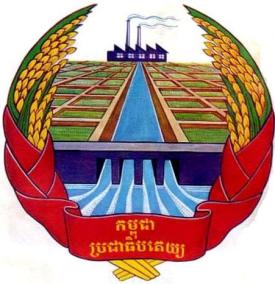
A Storm Was Coming starts with a still shot of the landscape of Equatorial Guinea. Slowly, the landscape becomes more and more overexposed until the shot is completely whitewashed and the landscape has disappeared. This visual example of whitewashing to start A Storm Was Coming is a style that director Jose Fernandez Vasquez uses throughout the film to represent the Spanish Empire’s eradication of the culture of Equatorial Guinea.
The Spanish Empire controlled Equatorial Guinea until 1968. As presented by the Spanish texts from the Francoist era which are read in the film, their rule was benevolent. Colonialism and the power structures it left ensured that an indigenous voice didn’t arise to challenge the Spanish hegemony. This one sided history is represented throughout the film through the scenes of a white man recording Spanish history and the lack of indigenous representation.
Scenes of a white Spanish man in a recording studio reading passages from bibliographies of Spanish colonists make up the bulk of A Storm Was Coming. The passages, which are being recorded in a studio in Madrid, present a one sided view of the history of Equatorial Guinea from the capital of the colonizers. These scenes are visually supported by images of different Spanish missions in Equatorial Guinea appearing out of a blank screen, as if they’re appearing on white photographic paper processed in the photographic darkroom. Their appearance from nothing, perpetuates the controversial colonial viewpoint that colonialism ‘civilized’ their colonies, providing infrastructure, culture, and history. It’s a viewpoint that erases all pre-colonial history, as if nothing of significance existed before the colonists’ arrival. The director combines images of Spanish missions appearing from ‘nothing’ with the reading of Spanish colonial texts to demonstrate the Spanish hegemony of written, aural, and visual Equatoguinean history.
Whilst the voices of Spanish colonists are being preserved, the voices of the colonized have been lost. We hear from a few Bubi people (one of the indigenous groups in Equatorial Guinea), but we never see them on screen. They tell us about Esaasi Eweera, a Bubi leader who tried to resist the Spanish Empire. He’s a heroic leader in their eyes, but his resistance is diminished in Spanish texts. As a result, he has almost disappeared from history, just as the place of his birth has disappeared under overgrown bush. Furthermore, whilst the film spends a lot of time documenting the Spanish voices in Madrid and showing images of Spanish missions, the only pictures of native Equatoguinean people are flashed onto the screen for less than half of a second. Their lack of representation emphasizes how the Spanish rule has lasted visually and aurally, seared onto the minds of the native and Spanish people. In contrast, the Bubi have disappeared from the past and present; they don’t even appear in the film.
Well, at least until the very last scene. To prevent enforcing the Spanish narrative the film reveals, the director, a Spanish filmmaker himself, ends A Storm Was Coming with a face on interview with Bubi scholar Justo Bolekia Boleká. It’s the first time the director shows a native Equatoguinean on screen, giving him more respect than the other characters with a face to face interview. It’s also the first time we hear the Bube language. Ending with Justo Bolekia Boleká and his daughter reciting a Bubi poem in Bube, reveals one thing the Spanish couldn’t eradicate: memory. It’s an ending statement that shows that Bubi culture still survives, despite the Spanish cultural and historical hegemony which still holds power today.
Watched on Festival Scope Pro. This film screened at the Berlinale Forum 2020.



 The Khmer Rouge created a new country by creating a new mythology. Art and tradition was thrown to the side. Now “the spade is your pen, and the rice field is your paper”. The picture on the right shows the Khmer Rouge’s utopia. There is a factory, irrigation, corn harvest, and rice fields but no people. This is Pol Pot’s vision for a state driven by work and void of culture.
The Khmer Rouge created a new country by creating a new mythology. Art and tradition was thrown to the side. Now “the spade is your pen, and the rice field is your paper”. The picture on the right shows the Khmer Rouge’s utopia. There is a factory, irrigation, corn harvest, and rice fields but no people. This is Pol Pot’s vision for a state driven by work and void of culture.


You must be logged in to post a comment.